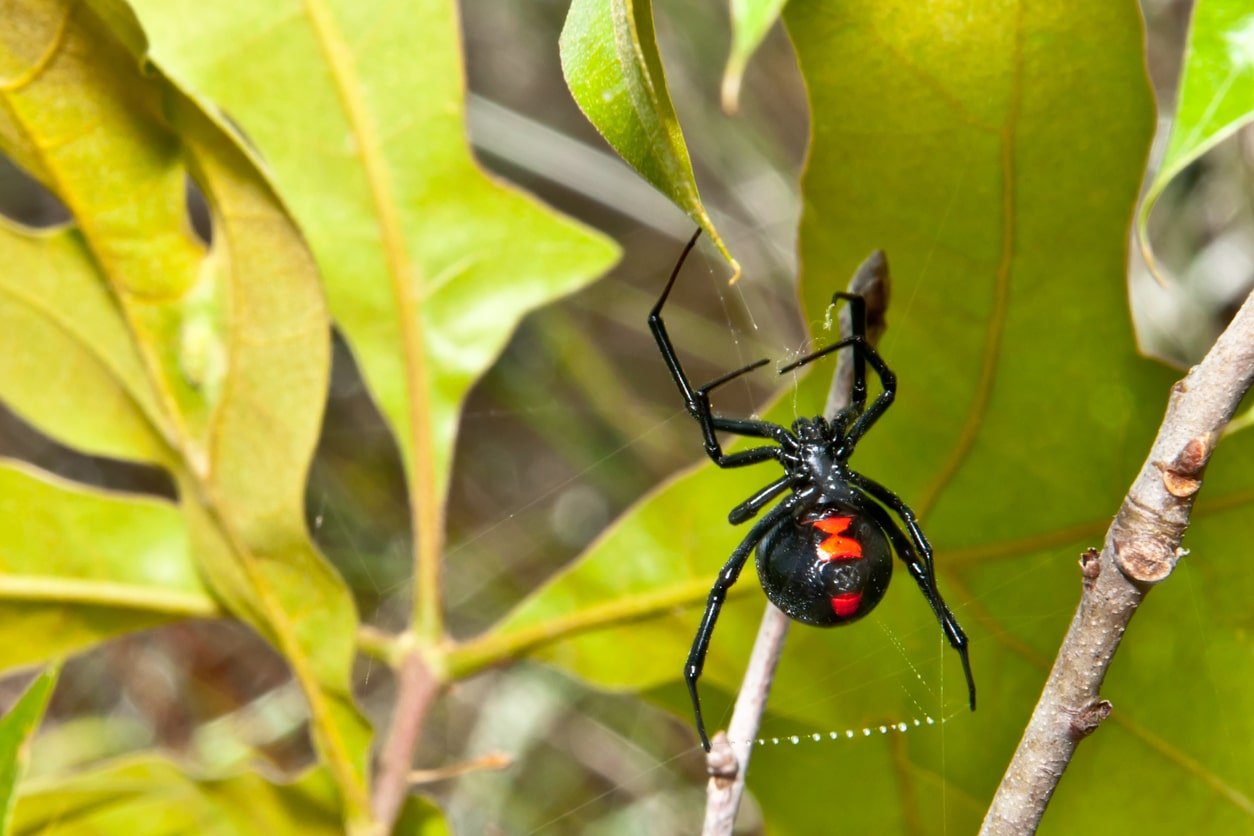Four Scorpions In Georgia To Watch Out For: Photos, Where They Hide & More
Thanks to its iconic mountains, coastlines, vast forests and plateaus, the U.S. state of Georgia is a popular vacation location for those looking to unwind and get away from the hustle and bustle of everyday life. It’s possible that you’ll get the opportunity to observe some of the state’s unique wildlife while you’re there too. Yet while visiting, you should keep a lookout for scorpions in Georgia, some of which can give a painful sting.
That’s especially important when you are trekking or camping in the wilderness. While not all scorpion species are harmful, hikers should be aware of what they are dealing with before venturing off the beaten path.
So are there scorpions in Georgia? There are four types of scorpions to look out for in Georgia – the Southern Devil; Slender Brown; Striped Bark; and Hentz Striped Scorpion. Whilst some of these scorpions have toxic stings, none are known for being lethal. Although on the rare occasion allergic reactions can make a sting highly dangerous.
Below we show you all four of those scorpions. Not only do we show you photos of each, but we also explain the effects of a bite and where these scorpions are most likely to be found. We then share with you tips on how to avoid being stung, and what to do if that unfortunately happens.
Recommended: 20 Must-Know Bugs & Insects in Georgia That Bite & Sting

1. The Southern Devil Scorpion
It has a terrifying sounding name, but whilst these tiny scorpions do pack venom, the Southern Devil Scorpion (also known as the Southern Unstriped Scorpion) isn’t as dangerous as some people believe them to be. Still a sting from one of these Georgia scorpions can be painful for some time. It can cause numbness, swelling and make the affected area red too. On rare occasions people are allergic to the venom. Such a reaction requires immediate medical attention.
These scorpions grow to 1.5 inches in length, have brown legs and pincers but a darker body and tail. Like most scorpions they are nocturnal and don’t seek conflict with humans. They like to hide in cracks, under things, and in dark corners, so people get stung when disturbing them by accident.

2. Slender Brown Scorpion
This species of scorpion, sometimes known as the Slender Brown Scorpion and Brown Bark Scorpion, can be found across Georgia. However it is most usually seen in the northern, western, and southern areas.
Typically, they reach a length of around two inches and possess a sting similar to a bee. They’re commonly brown to yellow-brown in hue, with darker legs and pincers. Nevertheless, their appearance can vary greatly.
They are likewise nocturnal and may be found dwelling beneath logs, rocks, leaves, and other objects like acorns.

3. Striped Bark Scorpion
In Georgia, the Centruroides Vittatus, also known as the Striped Bark Scorpion, is a poisonous species of scorpion that can be found mainly in central and northern areas.
Typically, they’re approximately an inch long and have a yellowish-brown tint to them. They also have a dark reddish-brown stripe running down their bodies. While most stings are not dangerous, if you are stung, you will likely experience intense pain, swelling, sweating, and even vomiting as a result.
These creatures are active throughout the day (diurnal) and prefer to hide in trees, beneath bark, and other crevices to avoid being seen. Striped Bark Scorpions are also one of the few scorpions that are known to climb trees to find prey.

4. Hentz Striped Scorpion
The Hentz Striped Scorpion tends to be found in Florida more than any other state. However the southern parts of Georgia have also seen multiple sightings. And there’s even been sightings of this scorpion as far north as Atlanta!
This scorpion is part of the same family as the Striped Bark Scorpion, and if stung it can be painful, and swelling can occur. Some members of this scorpion family have even caused lethal stings in the past, mainly due to allergic reactions. So if you believe you’ve been stung by a Hentz Striped Scorpion or a Striped Bark Scorpion, seek medical attention.
This scorpion tends to grow to around 2 inches in length and has a light tan to brown color. Its body is a little bulkier than other scorpions in Georgia.

Are There Any Other Scorpions in Georgia?
If you come across any scorpions in Georgia they will almost certainly be one of the four listed above. However, some U.S. states have reported new scorpion species imported by accident in recent years, usually due to cargo. For example, the Guiana Striped Scorpion can now be found in Florida but is originally from the Bahamas and Cuba.
If you do come across a scorpion in Georgia that doesn’t appear to be any of the four we’ve listed, then take a photo of it, note the location, and contact the U.S. Fish and Wildlife Service.

How to Avoid A Scorpion Sting: Five Steps You Should Take
Interestingly, scorpion stings tend to happen inside homes more than outside. As such, there are a few simple steps that you can take to prevent being stung.
1) Shake out your clothes and shoes before putting them on, just incase scorpions have decided to hide in them.
2) Check your sheets and bed before getting in; make sure the bedding doesn’t reach to the floor.
3) Shake out any towels before use, especially if they’ve been on the floor.
4) Don’t try to stomp or kill scorpions if you see them. If they’re inside try to relocate them using a glass and piece of paper.
5) Don’t walk around barefoot. Be especially careful outside in areas with lots of foliage.

What to Do if You Get Stung
If stung, the first thing you should do is receive medical attention. This is especially important for children, the elderly, and people who have allergies.
Ideally, if you can bring the scorpion with you to the doctor by capturing it safely, this could help them determine treatment. Be careful not to get stung again.
Keep track of your symptoms so you can share this information with your doctor. Most people will experience mild symptoms such as pain, swelling, numbing, tingling, or burning. It’s possible to develop more serious symptoms ranging from muscle twitching to seizures to an irregular heartbeat. Severe symptoms are not very likely, however. But if you notice them, make sure you’re seeking medical attention as quickly as possible.
If you make the decision to treat your scorpion sting at home, wash the area with soap and water and remove any jewellery nearby in case of swelling. You can apply a cold rag to the area to help with the sting. Take a pain reliever or antihistamine to help with the symptoms after consulting with your doctor. If symptoms begin to worsen, head to the hospital immediately.
Scorpions in Georgia: Our Final Thoughts
Despite several species of scorpions being found across Georgia, it remains unlikely you will be stung. Some of the most harmful species can be found in a variety of habitats, but it’s easy to avoid them if you take precautions.
The most active hours for scorpions are at night, when their prey are most vulnerable. So coming across scorpions during the day is rare. However they hide in cracks, crevices and under debris during the day, so make sure you’re careful when picking things up, or putting your hands in dark places.
It’s important to remember that scorpion stings can induce a variety of symptoms, ranging from regional pain and swelling, to more serious complications if you have an allergic reaction. If you have been stung by a scorpion, you should seek medical assistance as quickly as you can just in case.








